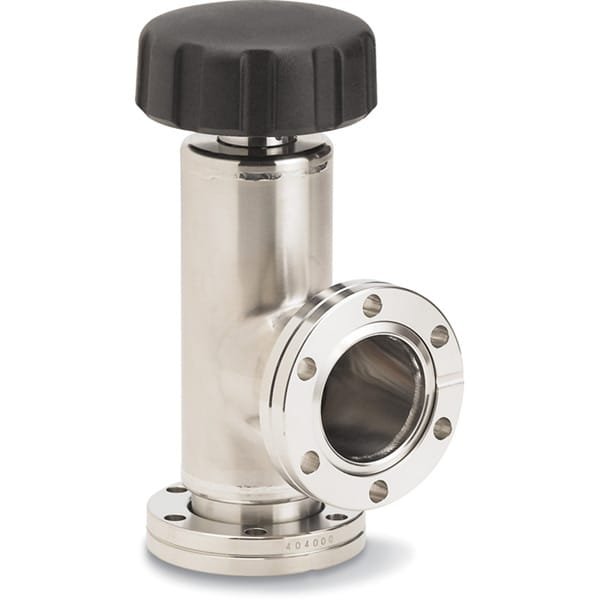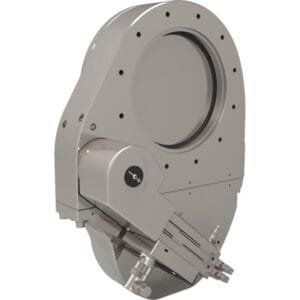Manual Stainless Steel All-Metal Angle Valves (CF Flanged)
This series of TFM manual stainless steel all-metal angle valves is specifically designed for ultra-high vacuum (UHV) and cryogenic applications, where extreme temperature fluctuations prevent the use of elastomer seal valves.
Key Features
- Approved for Beam Line Facilities: Suitable for use in beam line applications.
- Wide Temperature Operating Range: Functions effectively between 450°C and -250°C.
- Durable Seal Design: Maximum temperature bakeouts may necessitate poppet seal replacement after 50 cycles, while hundreds of cycles are possible with moderate bakeouts. A dial indicator on top of the valve indicates the correct torque for closure and when the seal needs replacement.
Additional Specifications
- Operable at cryogenic temperatures.
- Vacuum rated to below 10⁻¹¹ torr.
- Constructed entirely of stainless steel.
- Electropolished both inside and out for enhanced cleanliness and performance.
- Features extended-life stainless steel bellows.
- Easily replaceable copper poppet seal.
- Pulled port bodies provide higher conductance.
- Assembled in a clean room environment.
- Leak rate of 10⁻¹¹ standard cc/sec or less.
- Available with 1-1/3″, 2-3/4″, and 4-1/2″ O.D. CF flanges.
- Equipped with a dial indicator for proper closure.
Seal Replacement Procedure
The poppet seal can be easily replaced with a slotted screwdriver. After replacing the seal, the valve must be torqued to a higher value than during normal operation to ensure proper seating. After closing the valve to its standard torque value, loosen the set screw beneath the closure nut, rotate the indicator to the furthest counter-clockwise line on top of the valve, and retighten the set screw. This mark can be used for nearly indefinite closure.
Periodic checks with a torque wrench will help identify seat wear and determine the proper alignment mark. When the indicator reaches the last mark, seal replacement is recommended. Be sure not to exceed the maximum torque specifications.
Specifications Table
| Manufacturer | TFM |
|---|---|
| Pressure | Torr 1.000 x 10-11 Torr mbar 7.500 x 10-12 mbar |
| Rates | Helium Leak Rate 1.000 x 10-10 mbar*L/s 7.520 x 10-11 Torr*L/s |
| Temperature | Bakeable Closed 300 ºC 572 ºFBakeable Open 450 ºC 842 ºF |
| Cycle Life | 10,000 |
| Bonnet Seal Type | Copper |
| Valve Body Material | 304L SS |
| Valve Seal Material | Copper |





Reviews
There are no reviews yet.